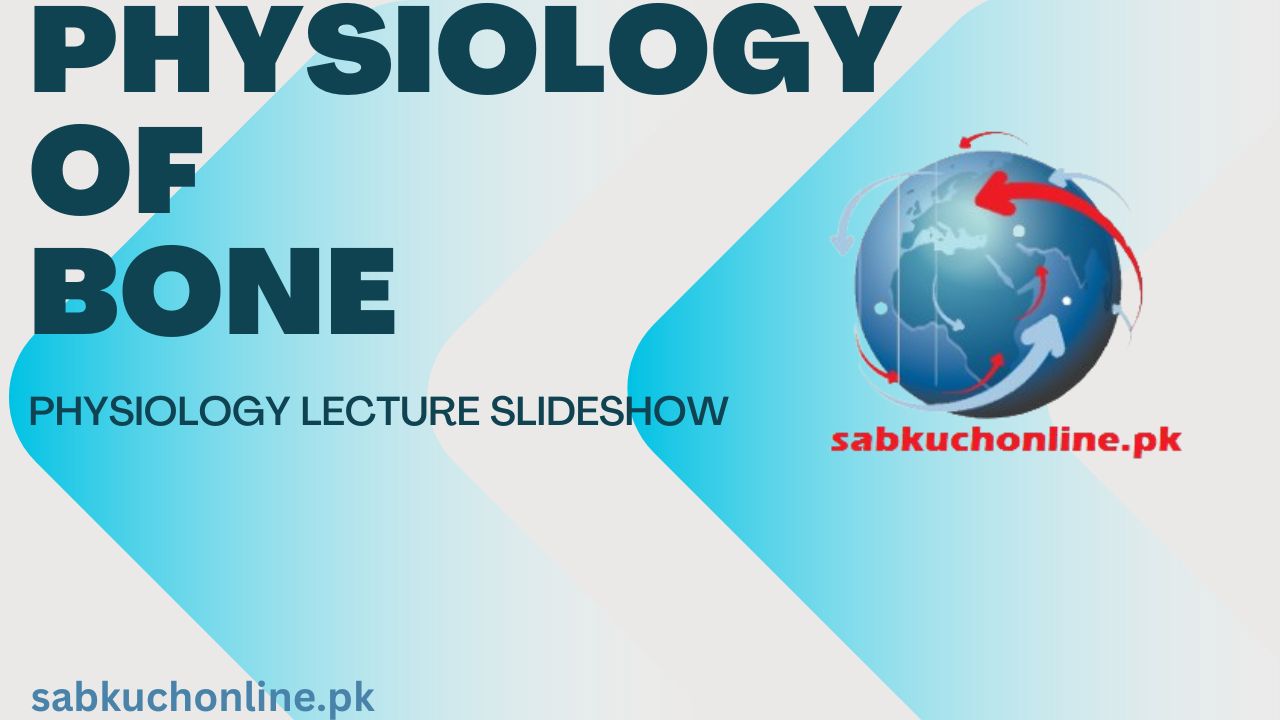 PHYSIOLOGY OF Bone - Physiology Lecture Slideshow
PHYSIOLOGY OF Bone - Physiology Lecture Slideshow  PHYSIOLOGY OF Bone - Physiology Lecture Slideshow
PHYSIOLOGY OF Bone - Physiology Lecture Slideshow  PHYSIOLOGY OF Bone - Physiology Lecture Slideshow
PHYSIOLOGY OF Bone - Physiology Lecture Slideshow 
1) Organic matrix 30%
A. Collagen fibers 90 to 95%
B. Ground substance (homogeneous
gelatinous medium)

Collagen fibers-provide tensile strength

Hydroxyapatites-provide compression strength

Hydroxyapatite Does Not Precipitate in Extracellular Fluid
Despite Supersaturation of Calcium and Phosphate Ions.
Why??
• Presence of Pyrophosphate-an inhibitor
• Therefore, hydroxyapatite crystals fail to precipitate in
normal tissues except in bone despite the state of
supersaturation of the ions.
• However under abnormal conditions,
calcium precipitate in arterial walls
in arteriosclerosis and cause the arteries to
become bonelike tubes.
• Likewise, calcium salts frequently deposit in
degenerating tissues or in old blood clots.
• Presumably, in these instances, the inhibitor
factors that normally prevent deposition of
calcium salts disappear from the tissues,
thereby allowing precipitation.

• Bone has three major types of cells:
1. Osteoblasts -concerned with bone formation (osteoblastic activity).
2. Osteocytes –concerned with the exchange of calcium between the
bone and ECF.
3. Osteoclasts-concerned with bone resorption (osteoclastic activity).



Osteoblasts also produce osteoprotegerin (OPG), that
inhibit differentiation of preosteoclasts into mature
osteoclasts that resorb bone.
Fracture repair ——holding of end of broken bone by fixation apparatus——patient use the bone —–stress on opposed end of broken bones—–activates osteoblasts + cause increase formation of new osteoblast—-Thus accelerate the rate of fracture healing.

PTH binds to receptors on the osteoblasts
Stimulate Osteoblast to release cytokines-osteoprotegerin ligand (OPGL), which is also called RANK ligand
Inhibit OPG released by osteoblasts.
OPGL cause causing differentiation of proosteoclast cells to mature multinucleated osteoclasts.
The mature osteoclasts send out villus-like projections toward the bone, forming a ruffled border adjacent to the bone
The villi secrete
the citric and lactic acids- cause dissolution of the bone salts
The enzymes digest or dissolve the organic matrix of the bone
(bone resorption).

• Normally, the rates of bone deposition and
absorption are equal to each other, so the
total mass of bone remains constant except
in growing kids.
• Osteoclasts eats away the bone creating a
tunnel.
• Now, the osteoclasts disappear and the
tunnel is invaded by osteoblasts instead;
then new bone begins to develop.
• The new bone being laid down in successive
layers of concentric circles (lamellae) on the
inner surfaces of the cavity until the tunnel
is filled.

• First, bone adjusts its strength according to the degree of bone stress e.g.bones thicken when subjected to heavy loads.
• Second, bone adjust its shape according to stress pattern for proper support of mechanical forces.
• Third, because old bone becomes relatively brittle and weak, new organic matrix is needed as the old organic matrix degenerates.